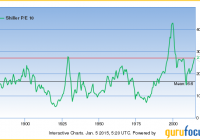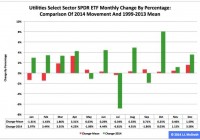Top Investments For 2015, A Followup – Bank Of America And Citigroup
This is a follow up on my last post Top Investments for 2015 . I was asked the following question in the comment section. This answer is a little more than a comment so I decided to post it here. Anonymous January 10, 2015 at 7:15 AM Hi Kevin, Could you please share with us your thoughts on the current tangible book value of C and BAC and why you still see a discount on their current price? Hi Anonymous. Thanks for your question. The price to tangible book value for C and BAC can be calculated to be 0.9 and 1.2, respectively. Whether or not that is cheap enough for you is something you will need to decide. Let me offer some additional thoughts on BAC first and then on C. BAC has paid out around $100 billion in legal expenses over the past 5 years. Their tangible book value has risen slightly over that same time. Given the fact the company has close to $150 billion in tangible book value, legal expenses of this magnitude are not insignificant. The next fact I would point out is that in Q3 2014, the company earned $5.0 billion in profits excluding the consumer real estate services (CRES) division. Annualized, this works out to just about $20 billion per year or $1.88/share. Let me be clear. Bank of America earns this amount of profit already today. They are earning this amount in a sub-optimal economy, a low interest rate environment, and with many regulatory headwinds. All you have to do is wait for the dust to settle and the earnings power of the company will come shining through. Now this $20 billion in profits works out to be approximately 0.9% return on assets (ROA). On a comparable basis, Wells Fargo (NYSE: WFC ) is earning 1.3% on their assets. I believe that with strong management BAC can earn above 1% on their assets, just like WFC does. The reason for this is that BAC, just like WFC, has a large, low cost deposit base supporting their assets. Including non-interest bearing liabilities, both companies have access to over a trillion dollars in deposits at a cost of 0.1% (10 basis points). Coming back to the returns on tangible common equity, we have established that BAC has a number of businesses that together are already earning 13.4% on tangible common equity (TCE). This is interesting because WFC is earning 13.8% on TCE, and JPM is earning 13.5% on TCE and C is earning 6.5% on TCE. If BAC was valued on the same P/TBV multiple as WFC or JPM, the stock would sell for between $19-25/share. So nothing has to happen and the value of BAC’s stock will rise somewhere between 15% and 50% as the underlying earnings emerge. Any help from a rise in interest rates and it will have real liftoff potential. Oh and perhaps the CRES division will turn a profit and the company will be able to utilize their deferred tax assets (> $30 billion). If the company earns $80 billion over the next 4 year, it isn’t hard to make the case that the common shares will sell for between $35-40/share. Of course a large portion of these returns will likely be dividends and share repurchases but the net result is the same, the common shareholders will realize over 20% annually over that time period. Turning to Citigroup, they are selling at a much lower price to TBV. As noted above that is warranted because of they are earning only 6.5% on TCE. Their ROA is only 0.6%, lower than BAC (ex CRES) and JPM at 0.9% and WFC at 1.3%. Don’t let this fool you; they have higher earnings potential just like BAC. As the real earnings power of the company emerges, they will earn around 1% on assets. If you apply a 1% ROA to C, the net result is an EPS of $6.21/share. First Call analyst estimates are for $5.41/share in 2015 and $6.52 in 2016, so we are right in the ballpark. Citi also has over $50 billion in deferred tax assets. In today’s markets there are few companies that can be purchased at less than 10x normal earnings and C is one of them. In the future the shares will sell more in line with BAC and JPM at 1.3 P/TBV, or around $75/share. So the upside is easily 50% and all shareholders have to do is be patient and watch the earnings rise. Hope this helps. Disclosure: I own BAC common, BAC Class A Warrants, JPM and WFC.

